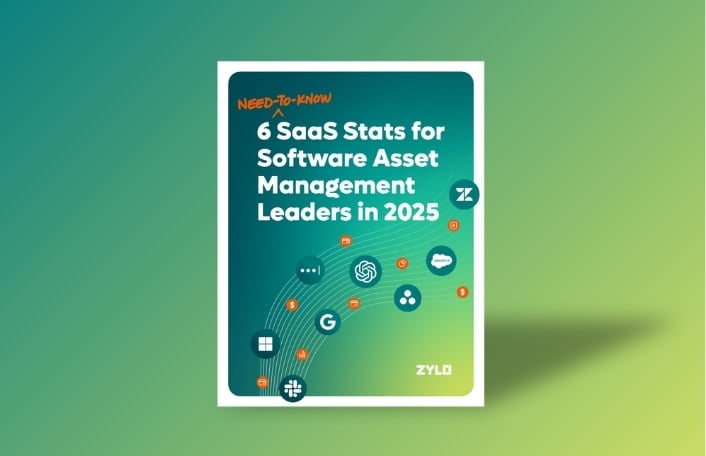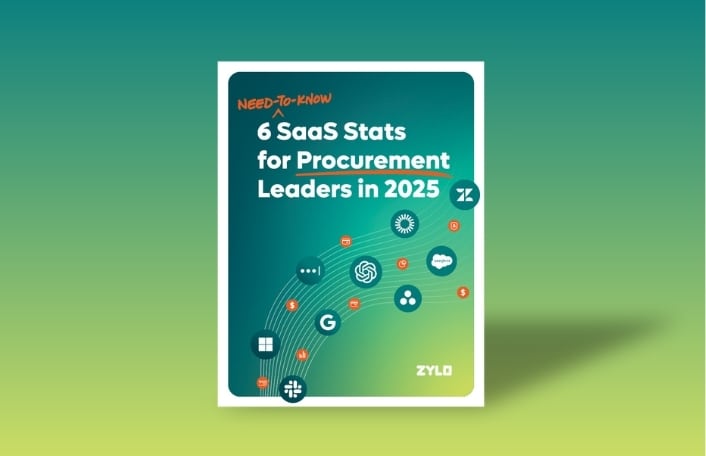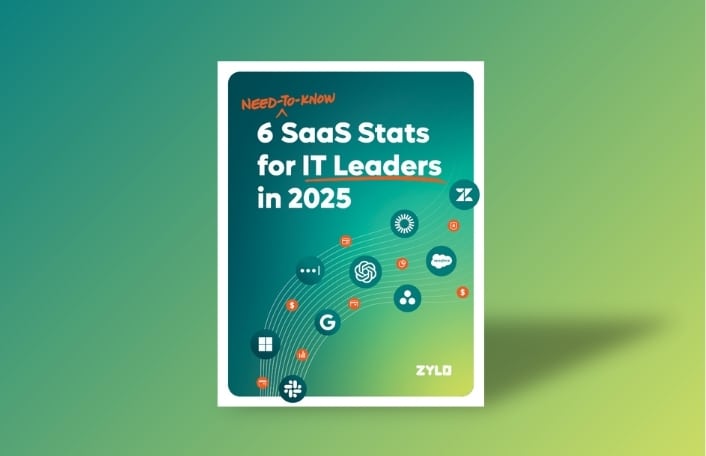
While the explosive growth of SaaS for the enterprise has its benefits (cost-effectiveness, shortened commitments, and one-click integrations), SaaS subscriptions also create challenges to enterprise organizations.
The potential risks of violating good IT governance to protect security, data, and privacy, as well as significant impacts to budgets forecasts due to duplicate spending, unplanned renewals, or under-utilization, must all be considered.
Fortunately, technology leaders can take concrete steps towards an enterprise-wide strategy that reduces risk, contains costs, and encourages users throughout the company to be good tech stewards. Assigning ownership roles and responsibilities is key.
Download this simplified checklist (or continue reading below) to learn how to assign strategic ownership across multiple levels within their organizations.
SaaS Ownership for Enterprise Leaders
Embrace Digital Transformation
With SaaS playing an increasingly larger role in enterprise tech investment, the question of creating an enterprise-specific SaaS ownership strategy has never been more important.
More than 50% of business technology is currently purchased and managed outside of IT. And with a 17.8% increase in SaaS spending predicted in 2019 by Gartner, this segment will continue to grow.
Executive leaders and IT teams responsible for driving enterprise policy should work collaboratively with lines of business to establish new strategic ground rules that enable flexibility within a governance framework.
Enterprise SaaS Strategy Includes Decentralized Ownership
Decentralized SaaS technology’s rapid advance demands a new approach. Whereas traditional on-premises management models tasked provisioning and deployment of software via IT teams, the adoption of SaaS places ownership and management in the hands of lines of business.
To harness the speed and agility of SaaS for business without creating undue risks for security, data, or budget compliance, IT leaders should own the overall enterprise SaaS governance strategy and monitor application inventories, but allow line of businesses to acquire and manage SaaS as needed within a best practices model.
To do so, a framework is needed that allows LOBs to responsibly manage individual application life cycles while maintaining a line of sight for enterprise leadership.
Balance Governance with SaaS Agility
To maintain SaaS applications’ unique effectiveness, don’t seek to manage all purchased applications. Instead, create tiers of governance and control based on each application’s cost and impact across the business.
To maintain speed and agility, empower LoBs to take ownership of vetted technology investments appropriate to their role in the organization Then, prioritize the central management of large, sensitive, and strategic applications.
One of the most effective tools tech leaders can deploy to avoid SaaS mismanagement is a central system of record such as Zylo that enables the assignment of SaaS ownership and appropriate roles to enterprise stakeholders, LoBs, and/or individual application users.
SaaS Ownership for LoB Leaders
Collaborate on Enterprise SaaS Goals
As an enterprise strategy for decentralized SaaS application ownership develops across the organization, IT teams and LoB owners must first agree on a source of truth for SaaS.
Zylo solves the macro-level issue of accurately inventorying an enterprise SaaS portfolio by discovering all SaaS applications purchased and implemented within the business, then continually updating this system of record.
With a mutual understanding of the current state of SaaS inventory, LoB and enterprise leaders can confidently collaborate on a strategic vision for optimizing the SaaS tech stack.
Define Owned SaaS Inventory Attributes
To bolster decision-making toward enterprise goals, LoB SaaS owners can supplement the system of record and the understanding of each application’s strategic role in the organization by documenting the attributes of their respective owned SaaS inventory.
Through the Zylo system of record, application owners can attribute catalog information such function types, cost centers, vendor notification periods, actual renewal dates, projected spend, as well as data, security, and privacy compliance information.
With this information, enterprise leaders and LoB owners can identify governance and compliance exceptions, contain costs by eliminating redundant applications, work towards defining standard applications, and leverage enterprise license agreements where appropriate.
Manage SaaS Application Life Cycles
With enterprise oversight best practices in place and a system of record created, LoB application owners can assume responsibility for managing the life cycles of their owned SaaS inventory.
The Zylo system of record enables enterprise and LoB application owners to manage application life cycles from start to finish. LoB owners retain ownership over purchasing and managing SaaS applications, but use IT-derived best practices for application vetting, onboarding tasks, ongoing measurement of user adoption and usage, and application renewals or off-boarding.
This includes discovery of initial entry into the SaaS stack, storage of contract documents and associated metadata, assigning user-appropriate roles or views for employee-level users, creating reporting around user adoption and sentiment, reprovisioning tools to manage licenses, and a renewal calendar for all applications.
SaaS Ownership for Employees
Give Employees the Big Picture
In the scheme of planning overall the enterprise SaaS strategy, individual employees may have little to do with the activities shaping enterprise strategy. Yet, as individual buyers in enterprise organizations, employees’ actions (or inaction) have a dramatic cumulative effect on the quantity and quality of SaaS in inventory.
To be effective, an enterprise SaaS ownership strategy must acknowledge this effect and strive to train individual employees on SaaS purchase and adoption policies, compliance with security, privacy and data standards, and overall stewardship of technology.
Just as many organizations have emplaced rigorous controls to maintain cybersecurity hygiene among employees (training sessions on phishing attacks as an example), promoting good SaaS hygiene is equally important.
Ensure Responsible SaaS Ownership
Employees who purchase or manage SaaS applications on behalf of the enterprise but on an individual basis have an inherent responsibility to be a good steward of the technology investments they’ve made.
This includes acknowledging and understanding the risks that even freeware or low-cost SaaS applications pose, such as when company data or customer data is used within an application.
One approach to ensuring responsible SaaS ownership is building a vetting and review process as a measure of quality control for which new applications enter the overall SaaS inventory.
If and when employees propose a new application to purchase, IT can complete a quick review of current application inventory (to prevent duplicative purchases) and vet the application for financial, legal, data or other compliance criteria, thereby incrementally creating a catalog of trusted applications.




